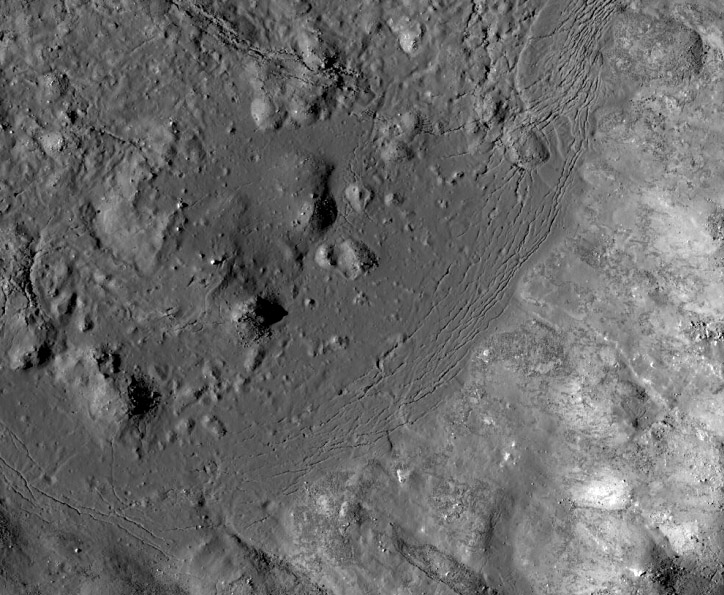November 9, 2018
Abusing Rocks
Originally published August 26, 2009

image from LROC Browse Gallery; image width about 3.5 km
The kinetic energy released during a hypervelocity impact damages rocks in different ways. Some rocks are fractured, pulverized and ejected, creating the hole we call a crater. We see the ejecta as rays, secondary craters, continuous ground deposits and even rim material. Some ejecta escapes the Moon's gravity, entering orbits that disperse Moon rocks across the inner solar system with some landing on Earth - if we find them they are called lunar meteorites. Some target rocks receive enough energy that they are melted, but they don't just sit there steaming - these rock liquids are tossed into the space above the new crater, splashing back onto the crater rim and floor. This molten material flows downhill, with some parts freezing while flowing and thus creating silvery glass slides. Hollows around young craters are filled with melt material that flowed off nearby slopes, collecting in low spots. A few very fresh large craters - Tycho is the best nearside example - are wreathed with dark halos of impact melt. This newly released - thank you, LROC team! - LRO image shows impact melt on the floor of the very young farside crater Necho. The LRO information release is so good I thought about just linking to it as today's LPOD. But the image made me wonder how the features we see might have formed. The crater inner rim is the bright material on the right side, and the impact melt is the darker material that is almost everywhere else, surrounding and partly covering hills and debris on the crater floor. A peculiar feature of this impact melt is the belt of cracks that generally follow the curvature of the crater rim. This suggests that the cracks are not randomly located. Cracks occur where solid rocks are forced to bend beyond their breaking point. We see such cracks - but larger ones - as concentric rilles along the edges of mare lavas that have subsided. We also see cracks along the summits of uplifted areas (think the circumferential rilles in Pitatus). So did these cracks on the edge of Necho's floor form due to subsidence or from annular uplift - and why? Give your answers and evidence/arguments in the Comments section.
Chuck Wood
Technical Details
July 31, 2009, 18:22 UTC.
Related Links
Necho
Necho's rays
Yesterday's LPOD: Tell Me a Story
Tomorrow's LPOD: Follow the Bouncing Boulder
COMMENTS?
Register, Log in, and join in the comments.



